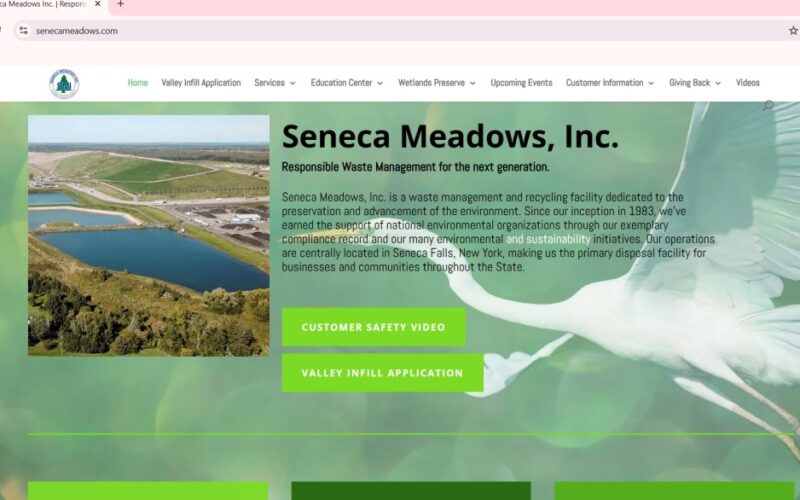To most New Yorkers, a far-away landfill in the Finger Lakes may not be the first issue on their minds. Why does this landfill matter to residents of the five boroughs? First, because nearly a third of the 6,000 tons of waste that the landfill accepts each day come from New York City. But perhaps more alarmingly, Seneca Meadows is currently sending poisonous, PFAS-laden runoff into the Hudson and your drinking water supply.
The landfill is completely full, and set to close at the end of 2025 — but if its operator gets its way, it will remain open for another 15 years and grow even larger. To stop the landfill from harming people across the state, there are two crucial steps New York needs to take: Defeat the moneyed interests that are trying to delay the closure of the landfill until 2040, and invest in smarter solutions to get rid of our trash.
Waste Connections, the multi-billion dollar, Texas-based waste company that owns Seneca Meadows, has applied for a new permit to extend its operations and expand its footprint. The proposal is at the center of a contentious statewide battle, where impacted community members and proponents of a healthier New York are calling on the state Department of Environmental Conservation to deny the proposed expansion.
We must follow through on executing its legally mandated closure at the end of this year for the health and safety of my community — and yours.
The Seneca Meadows Landfill has had damning effects on the people who live in Seneca County. In fact, the state Department of Health recognizes Seneca County as a lung cancer cluster — residents in the towns bordering the landfill have a 35% higher chance of getting lung cancer than the average New Yorker.
However, this landfill isn’t just harming Seneca County — it’s poisoning the rest of the state, including New York City. A recent report released by the Hudson and Mohawk Rivers Leachate Collaborative found that wastewater from landfills, laden with per- and polyfluoroalkyl substances (PFAS) — known to cause fertility issues, liver disease, hormonal imbalances and a variety of lethal cancers — makes its way into New Yorkers’ drinking water.
The 60 million gallons of PFAS-laden leachate produced at Seneca Meadows annually is trucked around the state, entering the Mohawk and Hudson rivers. This contaminated leachate makes its way down the river to New York City. Most wastewater treatment plants don’t have the technology to filter out the PFAS before it goes into their drinking water sources.
The landfill is also a huge emitter of greenhouse gases. A shocking video of the landfill shows a massive, uncontrolled plume of hydrocarbons wafting from its center, a gross assault on our state’s climate laws.
Why then, is Waste Connections fighting tooth-and-nail to perpetuate these atrocities? Waste Connections has poured hundreds of thousands of dollars into local and state races to ensure it can continue polluting our beautiful state while they reap profits. Gov. Hochul must reject the proposal, stay the course and proceed with the landfill’s closure, as planned.
New York already has a robust state Solid Waste Management Plan that, while not perfect, is a roadmap for achieving our climate goals as a state- and prioritizes reducing the amount of waste that is sent to landfills. It urges local and regional communities to work together, and stresses the import of new legislation to assist the state in turning the plan into a reality.
Proposed legislation such as the Plastic Reduction and Recycling Infrastructure (PRRI) Act would reduce the amount of single-use plastic packaging produced and would hold companies responsible for its waste production. A law like this one — which passed the state Senate last year — would be revolutionary in reducing the amount of waste that currently enters landfills by the truckload.
The PRRI Act could help us reduce the enormous footprint landfills require and get us closer to the goals outlined in the state waste management plan. Along with prioritizing other sustainable waste management practices, such as composting and reusing building materials, New York has the opportunity to become a leader in sustainability by shutting down Seneca Meadows once and for all.
Now is the time for Hochul to be an environmental champion, and for the legislature to help us achieve the state’s waste management goals. Instead of continuing to rely on landfills, it’s time to end our throwaway culture and imagine a healthier future for New York.
Taylor is the co-founder of Seneca Lake Guardian, a group dedicated to preserving the health of the Finger Lakes region.








